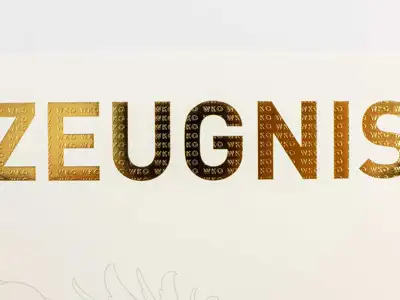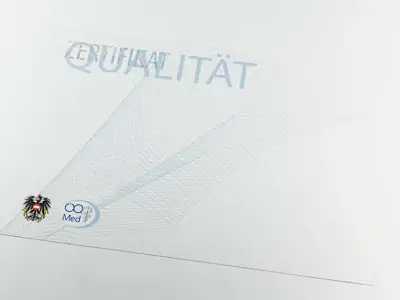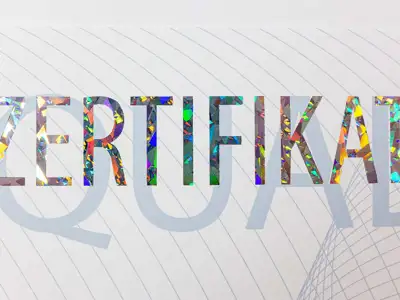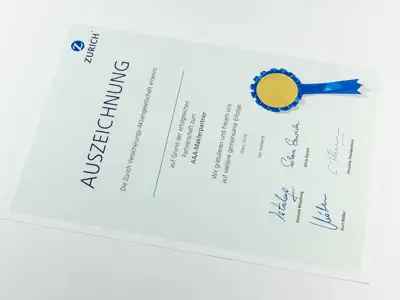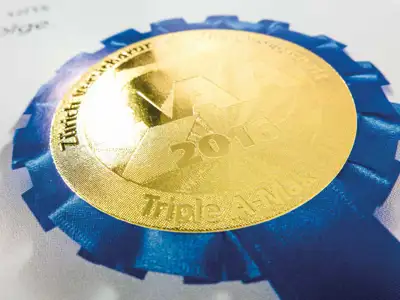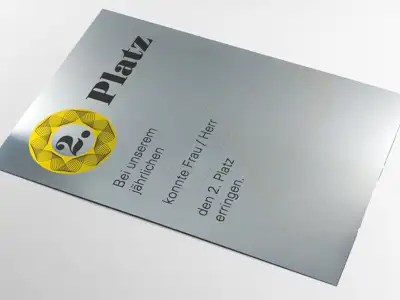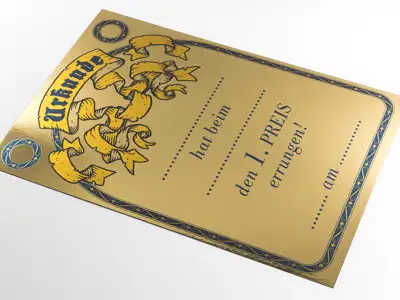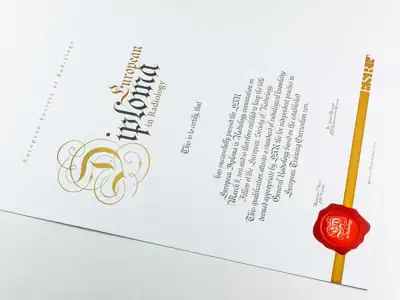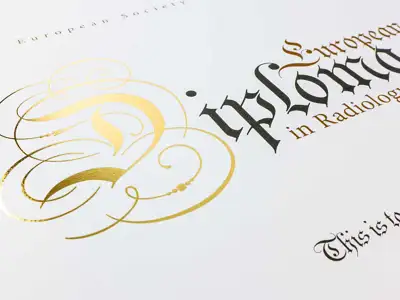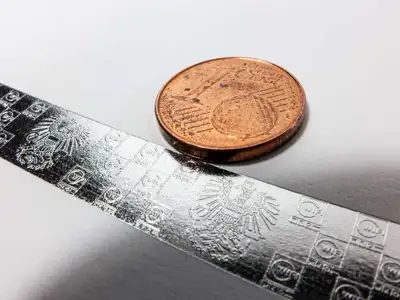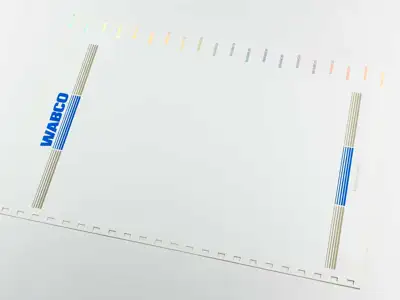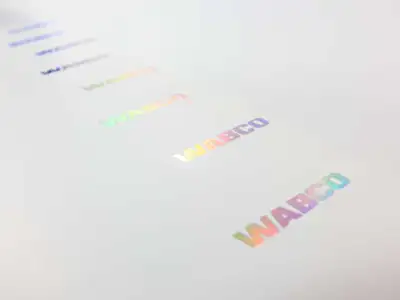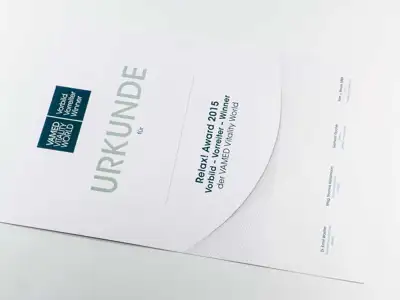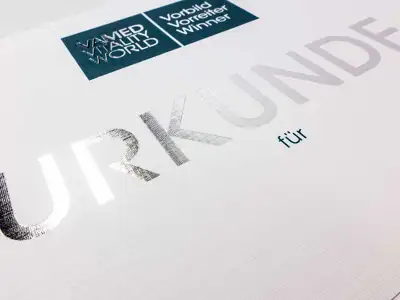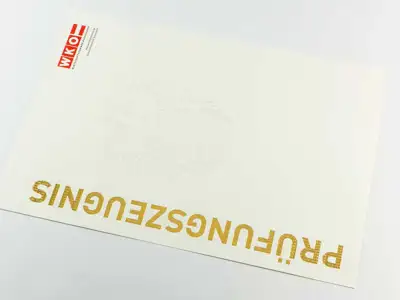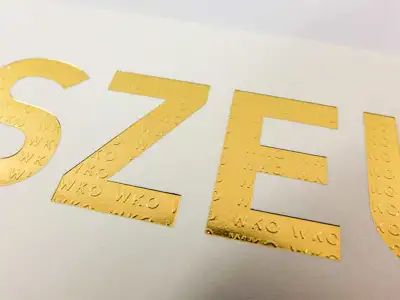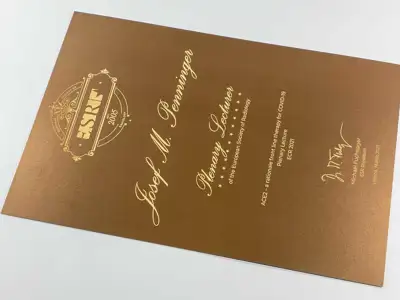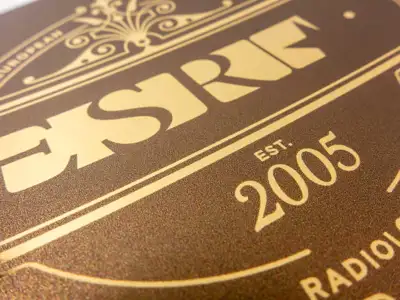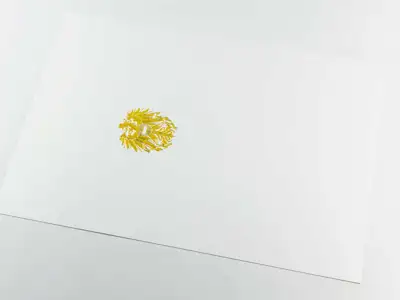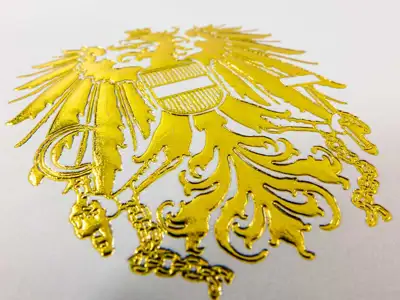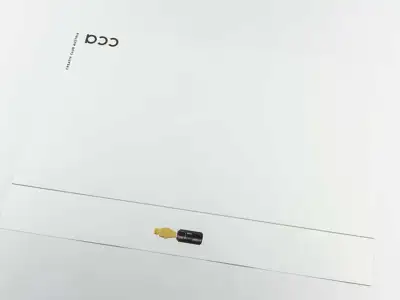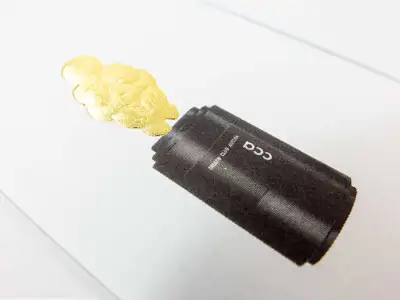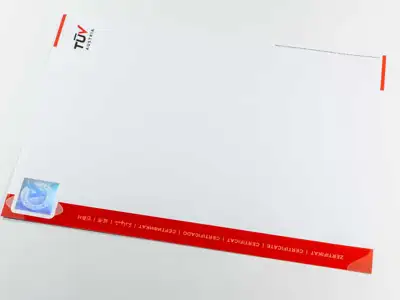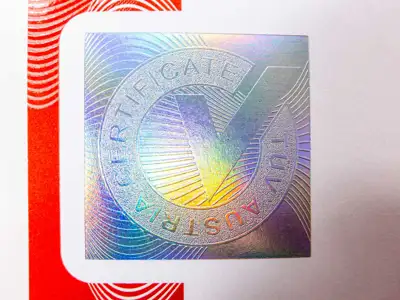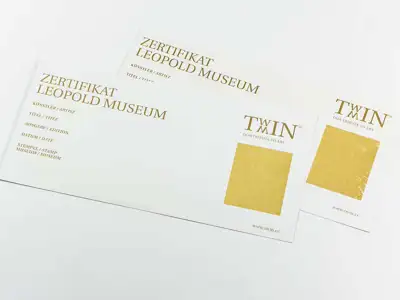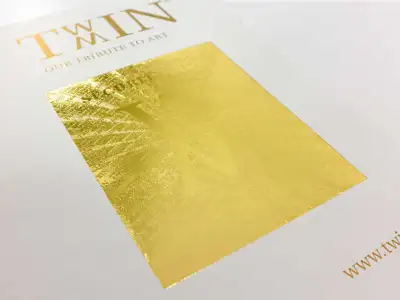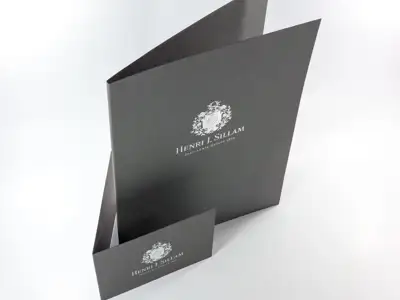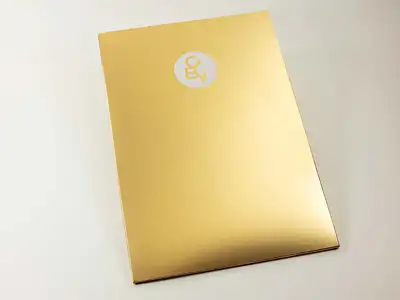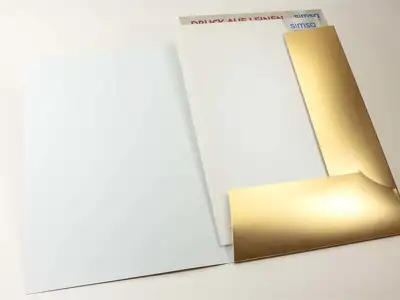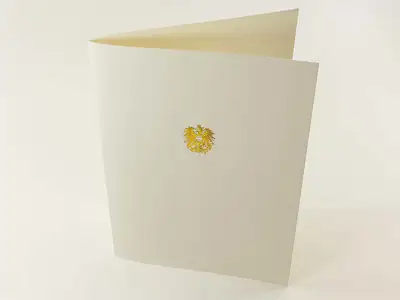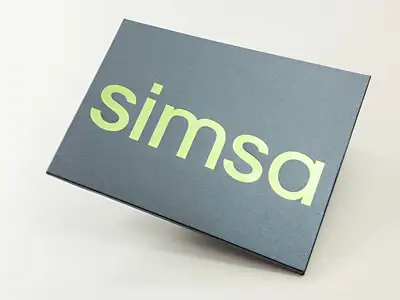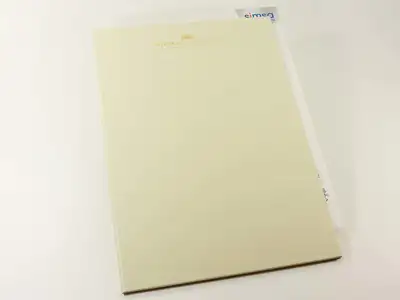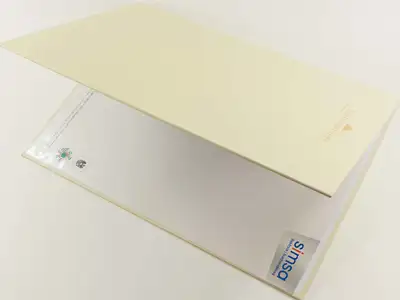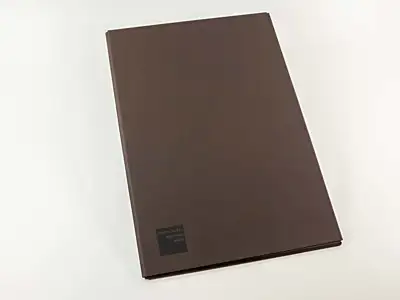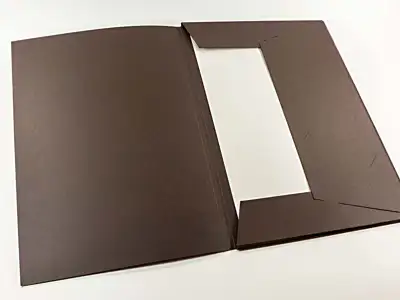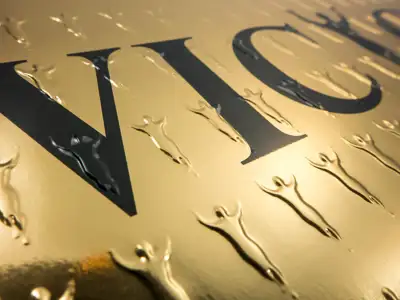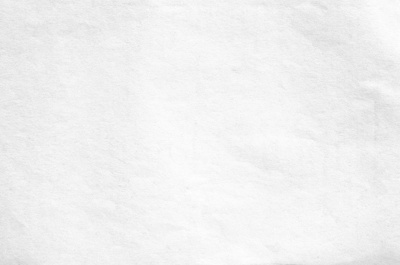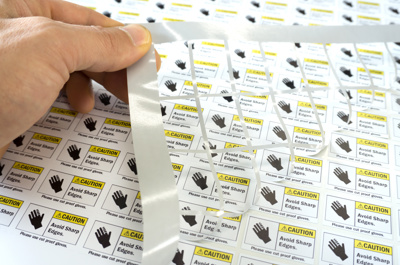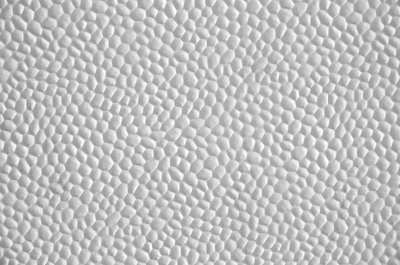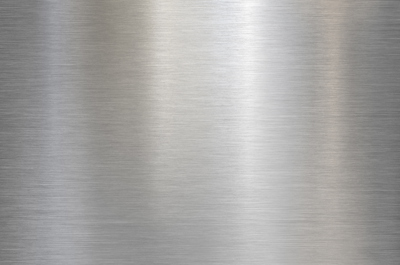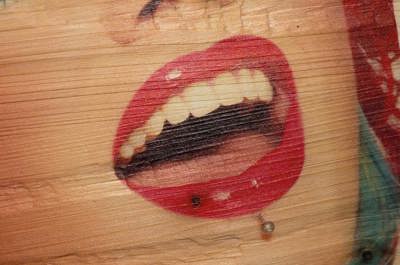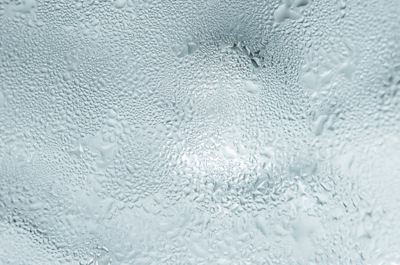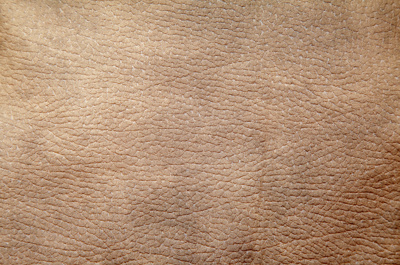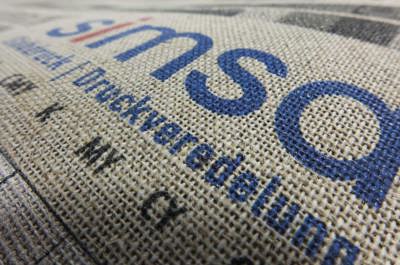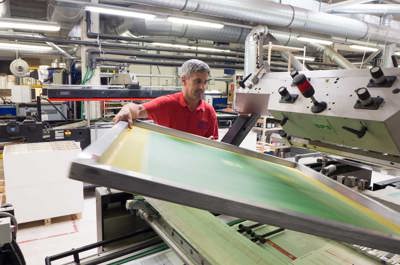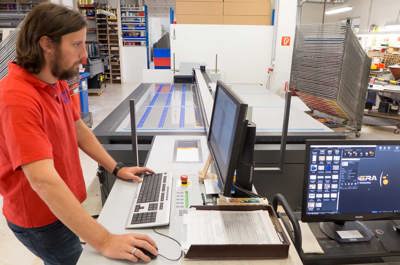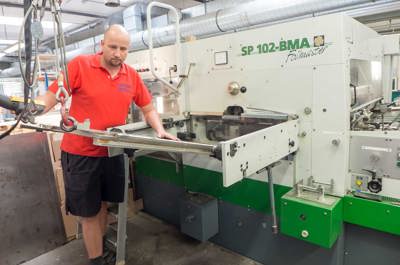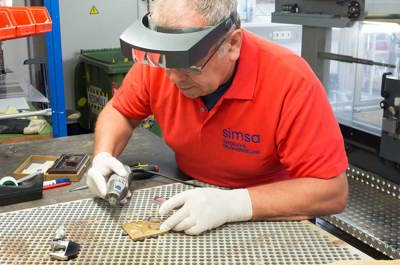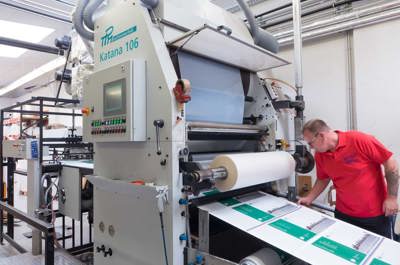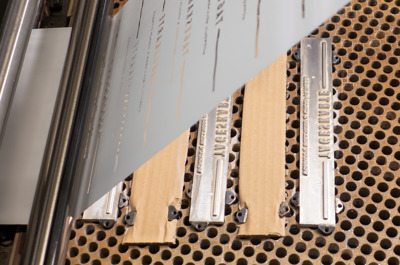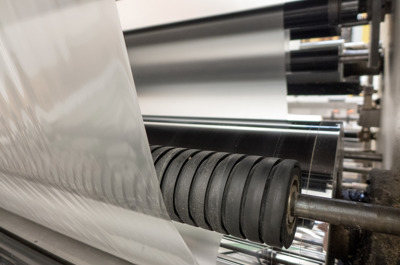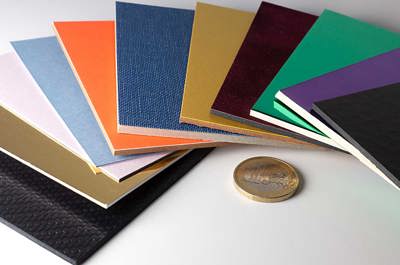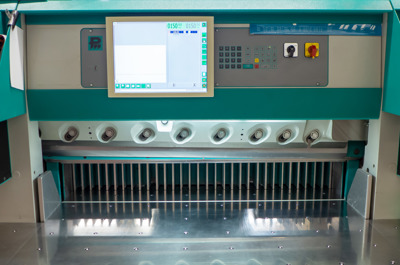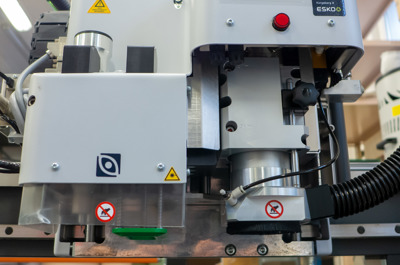Certificates, diplomas & testimonials
We are your printer for professional certificates for companies and organizations!
- In almost any desired format
- From 100g/m² thin paper to thick cardboard
- Personal advice with security concept
- With forgery protection
- High quality printing and finishing
Unfortunately, many conventional prints can very often be deceptively reproduced even by means of a color copier. In the case of documents that certify values and rights, forgers can cause you considerable damage as a result. Printing with our security features helps you to prevent this! By increasing protection against forgery, they make criminal copying attempts much more difficult. Additionally, they cause the recipient to trust the document and your organization.
Psychologically, a nobly printed certificate is also a status symbol for the owner, representing prestige, achievement or life goals reached. Such specially printed certificates then often become a framed eye-catcher on the wall.
Having high-quality certificates printed at simsa brings you additional value beyond the mere purpose of the certificate:
They set you apart from your competitors, build trust in your company, reinforce advertising messages, generate positive attributions to your product and help build your brand.
You have many different options for implementation at your company
- Preprinted forms for personalization at your office printer or by elegant handwritten entry for that personal touch
- Finished certificates, with or without printed personalization
- From thin 100g/m² paper to strong cardboard, for example for small cards
- Any special formats as well as standard formats like DIN A5, A4, A3 etc.
- On request also numbered, personalized or in different varieties regarding the content
- If need be, equipped with many security features to protect against counterfeiting: iridescent hologram effects, metallization in gold, silver or bright colors, varnishes that glow under bill detectors, tactile embossing, coatings that change color depending on the viewing angle or strong matte-gloss contrasts through varnish effects, for example, all cannot be color-copied.
- Even certificates on colored paper and cardboard. Even certificates on dark blue or black cardboard with silver, gold or white printing.
- Even certificates made from paper with a metallic surface such as gold cardboard, silver cardboard or bronze cardboard.
- Also certificates made of paper with tactile embossed surface
- Your certificates are possible with many finishes, such as tactile printing experiences, real metallic shine, glittering points of light, deceptively lifelike imitated surfaces on photos, high-gloss varnish effects, rough structures that invite you to touch them, prints that glow in the dark, iridescent rainbow colors and much more, to name just a few examples. We will be happy to advise you!
Everything around the certificate
Of course, you also get everything around the certificate with us:
- Stylish and high-quality certificate folders in your design.
- Gladly also as wing folders with glued pocket for inserting the certificate
- Classic academic degree folders made of 2mm thick cardboard with cover
- For the fixation of documents, plastic tabs, plastic hulls, cords or rubber bands are also available
- Our 2-side open cardboard sleeves are also a good solution for crease-protected and undamaged mailing in an over-envelope. These can also be printed with an elegant look and eye-catching effects
Typical application areas
Have certificates, diplomas & testimonials optimally printed for:
- Certificates to certify longer-term training courses
- Diplomas to confirm participation in courses or seminars
- Victory certificates in gold, silver and bronze for sports competitions
- Awards, for example for special honors or for an anniversary
- Printing of certificates for awards and rankings
- Honors, e.g. for company and club memberships and many years of membership
- Acknowledgements, e.g. for lectures or voluntary work
- Confirmation of authenticity, e.g. for certificates of authenticity for luxury items such as noble handbags, oriental carpets or fine wristwatches
- Confirmation of the degree of purity or quality, for example in the case of certificates indicating the carat of gold jewelry or the class of gemstones.
- Documentation of limited series, for example in the case of art objects or collector's items
- Certificates of value such as voucher letters or gift vouchers for special occasions, e.g. for hotel stays or wellness offers
- Certificates and proofs of qualification for technical knowledge
- Test certificates for technical equipment
- Access authorizations and parkingpermits
When designing certificates, 4 things are particularly important:
- Certificates often testify to successes after great effort or great material assets. These special achievements must also be reflected visually in high-quality printing. Psychologically, a nobly printed certificate is a status symbol for the person receiving it, representing prestige, achievement or achieved goals in life. Particularly beautifully printed certificates make people proud of themselves and often become a framed eye-catcher on the wall.
- Many conventional prints can be reproduced in a deceptively realistic way using a colour copier. Counterfeiters can do considerable damage to documents that certify values and rights. Printed security features are effective protection against forgery. They also enhance the visual appearance of the document. In any case, at least 1 highly visible security feature is important as a deterrent against "hobby forgers" and petty criminals.
- Combine the two considerations above and you will gain additional confidence in the document and in your organisation. This is also efficient advertising for your brand!
- Let us, the printing professionals, advise you: We security printers do not put all secrets and tricks on the internet! ;-) Depending on your needs and how high the risk of counterfeiting is, we will create a customised product for you.
The most common type of printed matter forgery is the simple colour copy, either on an office copier or by means of a scanner and PC printer. A remedy for this is any coating that cannot be printed on such devices. These include iridescent hologram effects or real metallisation in gold or silver. For even more protection against counterfeiting, customer logos and texts can be incorporated into the metallisation. Strong matt-gloss contrasts using UV varnish effects or effect inks with colour-changing tilt effects are also suitable here if a more discreet design is desired.
In any case, at least 1 highly visible security feature is important as a deterrent against "hobby counterfeiters" and petty criminals.
If there is a risk of professional counterfeiting, such as with value certificates like vouchers, several features should be combined! Furthermore, different printing techniques should also be combined, which are rarely found in conventional print shops.
In addition, there are also hidden security features, such as varnishes that start to glow under banknote testers, or micro-texts that are not visible to the naked eye.
Generally speaking, if the reproduction becomes too cumbersome for counterfeiters, they will look for a less strenuous object to counterfeit.
Security features to protect printed matter, such as deeds or certificates, against forgery are divided into visible and hidden features:
Highly visible features include iridescent hologram effects and real metallisation in gold, silver or bright colours. In addition, customer logos and texts can be incorporated into the metallisation for even more protection against counterfeiting.
These precious metal effects make the certificate visually more attractive and emphasise the high quality of the certified service and the issuing organisation. Since they are immediately visible, they act as a deterrent to forgers. For example, it is immediately clear that the genuine metal cannot be photocopied.
Our recommendation for the sequence: Always use at least one visible feature first!
At a distance, strong matt-gloss contrasts created by lacquer effects are somewhat less strong, but also easily visible. Palpable embossing is also visible on closer inspection and additionally offers a three-dimensional raised part of the surface that cannot be colour copied.
Hidden security features are, for example, varnishes that start to glow under banknote testers, micro-texts that cannot be seen with the naked eye, colours that glow in the dark or hidden information that has to be read out by a tester.
As a rule, hidden features only make sense when there is a particularly high risk of attack by counterfeiters. They are therefore mainly used for value printing types such as banknotes or vouchers.
In general, the higher the risk of counterfeiting, the more features should be combined! If attacks by commercial counterfeiters are to be expected, then different printing techniques should also be combined. If the reproduction becomes too laborious for counterfeiters, they will look for an easier target.
This is easily achieved by means of professionally printed forms with security features and visual enhancements. The content of the forms is largely neutral, usually only with your logo and decorative elements, and in DIN A4 or A3.
This makes it easy for you to personalise them in your office printer, for example by adding names and course descriptions. For honorary certificates, an elegant, handwritten entry of the name can also add a personal touch.
Of course, noble certificates should have more body than a typical office printout on 80g/m² paper. Double the thickness of 160g/m² has proved to be a good empirical value here. It is already weighty in the hand, but usually still goes through the laser printer from the normal tray feeder.
Basically from postage stamp size to 680x980mm size. However, most certificates are personalised on the office printer and sent or archived in standard envelopes. 99% of the certificates are therefore pre-printed in the standard formats DIN A4 and DIN A3. In addition, there is occasionally a request for DIN A3 folded to DIN A4 for four-page certificates.
Special formats are usually much larger and small series, for example for presentation at a gala or for press conferences. Press photographers and cameramen can also record the content legibly in such large prints. Certificates of honour that are to hang on the wall as prestigious status symbols in company headquarters are also usually printed in a large size like DIN A2 or even A1 and framed.
In principle, there are hardly any restrictions: Whatever can be printed can also be printed in the design of a deed or certificate. It doesn't matter whether it's coated illustration paper, uncoated natural paper or even a plastic film or acrylic glass.
In practice, however, many deeds and certificates are first produced by a professional printer as neutral pre-printed forms. In this way, security features are added to the paper as protection against forgery. Later, personalised imprints are made on these forms, for example with names and dates of birth. This can then be done using a conventional office printer. In order for the paper to function optimally, it should be uncoated and have a grammage of between 80 - 160g/m². We recommend a paper weight of 160g/m², so that the certificate feels a little heavier in the hand and conveys a sense of quality.
For certificates that are intended for public presentation, such as framed award certificates in a company foyer, the paper can also be a thicker cardboard. This will then be more stable in the frame and, in contrast to thin paper, will not tend to probably curl over the years.
A certificate is a confirmation or attestation of something. The term comes from the Latin "certus" for "sure, certain" and "facere" for "to make". Certificates exist, among other things, for the certification of quality standards, authenticity or compliance with standards on technical safety or sustainability of products. In the digital age, there are also increasingly virtual certificates.
A document, on the other hand, is an "embodied declaration of thought for proof in legal transactions", i.e. a physically existing object. In legal terms, rights and obligations are therefore usually derived from it.
In everyday professional life, the terms are probably mixed up again and again. For example, a graduate of a programming course at a software manufacturer can receive a "deed", a "certificate", a "course confirmation" or a "document of achievment" after successfully passing the final examination... ;-)
In any case, you can have all variants printed with us!
From www.simsa.at you can get customised honorary certificates in all sizes, shapes and colours. Printed on paper, cardboard, foil, acrylic glass or wood. With great effects such as precious metal gold or silver, hologram, lacquer effects and much more. If required, with security features to protect against counterfeiting. For presentations in front of larger audiences and press photographers, also as enlarged prints for good legibility (as known from the large boards for the media-effective presentation of donation cheques). Already personalised or, in the case of paper, also available as neutral pre-printed forms on which impressions can be made later on the office printer.
